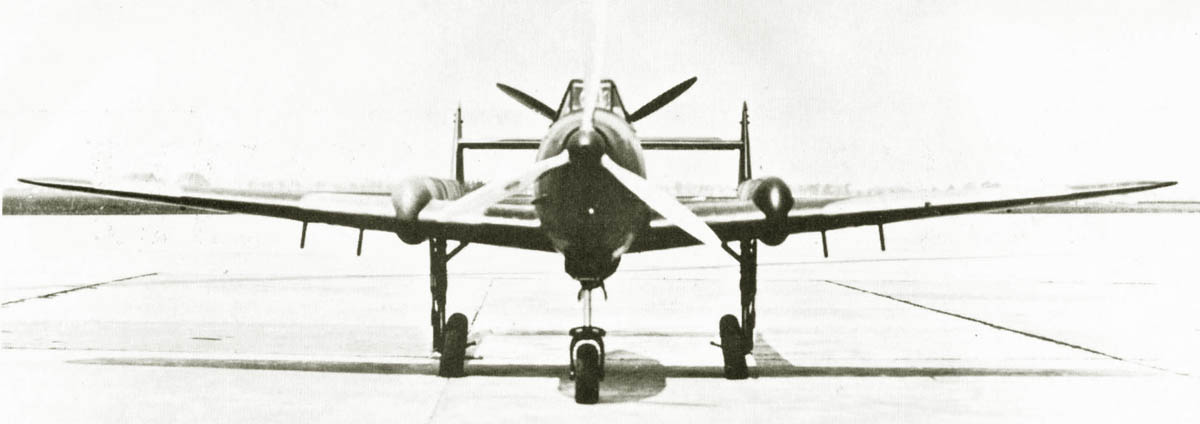
Aviation of World War II


 |
Aviation of World War II |


|
|
Soviet Union | Lend - Lease | Facts | Forum | Germany | Japan | R A F | U S A A F | Other | Photos |
Fokker D.XXIIIFighterFokker

However, the power plant of the aircraft consisted of two low-power liquid-cooled engines Walter Sagitta I-SR development of Walter Major 6, 12-cylinder V-shaped air-cooled, 450 hp. The first flight of the Fokker D.XXIII took place on May 30, 1939. The characteristic problems of the pusher propeller scheme immediately appeared - a strong overheating of the rear engine, plus the impossibility of an emergency exit from the aircraft, and in addition to the entire power plant capacity of a thousand hp. the car with a takeoff weight of almost three tons was clearly not enough. In November 1939, tests began, which basically confirmed the correctness of the chosen path, but numerous "childhood diseases", which took a long time to eliminate, did not allow the fighter to be put into mass production before the start of the German invasion. In total, the Fokker D.XXIII performed 11 flights with a total flight time of 4 hours. On May 10, 1940, on the day of the German attack on the Netherlands, the Fokker D-XXIII was in Schiphol at the Fokker plant, where it was damaged during a German bombing raid. After the announcement of the armistice, the Germans showed great interest in the D-XXIII, Walter Sagitta engines were exported to Germany. This scheme was subsequently used by the Japanese when developing their high-altitude fighter Tachikawa Ki-94 , however, in this case, it was supposed to install powerful engines on it air cooling. The Japanese tried to solve the problem of safely leaving the aircraft by shooting the rear propeller blades and using the lower hatch in the niche of the front landing gear. In this case, the doors of the main landing gear legs should have been closed after their release. |
|
|
Bibliography
December 05, 2019
|
||||||||||||||||||||||||||||||||||||||||||||